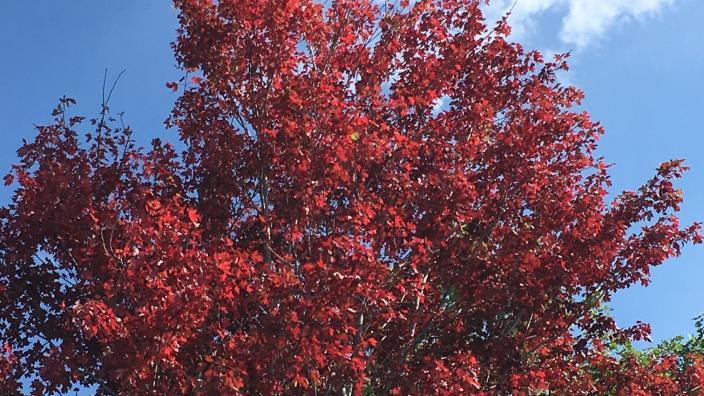That’s not something you’ll read in the text books, which Eric Singsaas says are incomplete.
Singsaas is director of the Wood and Bioeconomy Initiative at the Natural Resources Research Institute. But back in 2003, he was a biology professor at the University of Wisconsin-Stevens Point working with one of his former students (now a professor of horticulture) on some revelations about trees and why they change color in the fall. Common knowledge was – and for the most part, still is – that losing the chlorophyll is what reveals the bright colored pigment already in the leaves.
What’s really happening, says Singsaas, is more like an overloaded electrical circuit which will cause damaging oxidative stress to the leaves and the colors develop to protect them.
“The bright autumn sunshine coupled with colder temperatures is stressing the trees,” Singsaas explained. “Our research showed that the red pigments are formed in the leaves in the fall to shield them from excess sunlight, sort of like a sunscreen, to prevent leaf damage.”
Northland trees with the red/purple pigments (anthocyanins) -- red maples and dogwood, for example -– develop the pigments each fall, almost like a sunscreen. Trees that exhibit the yellow/orange pigments (carotenoids) – paper birch, aspen – have some of those pigments throughout the year, but increase the pigments as a protective response in the fall as a kind of circuit breaker.
But why does it matter if the leaves are “stressed” or damaged by sun and cold? They drop off anyway, right? Trees need to keep their leaves as long as possible so the trunk can re-absorb the minerals to use the next season. The less stressed the leaves are, the longer the tree has to retrieve the nutrients before winter.
The reason Singsaas is predicting a vibrant color season for this autumn is that the northland has experienced a wet spring and summer. “Trees that are stressed by drought conditions drop their leaves earlier,” he explained. “Fewer leaves mean the trees have less to protect and therefore produce less protective and less colorful pigments.”
However, an early frost can damage the leaves’ ability to manufacture the pigments, so that could impact leaf color as well.
The research paper “Resorption Protection. Anthocyanins Facilitate Nutrient Recovery in Autumn by Shielding Leaves from Potentially Damaging Light Levels,” by William Hoch, Eric Singsaas and Brent McCown was published in Plant Physiology, Vol. 133, 2003.
